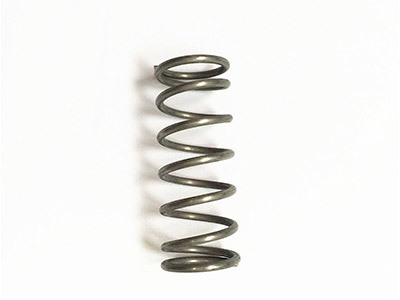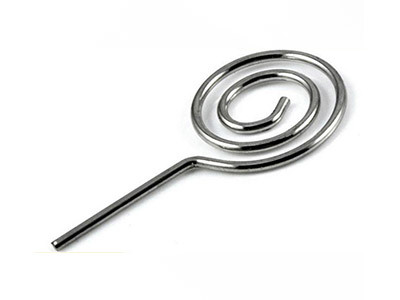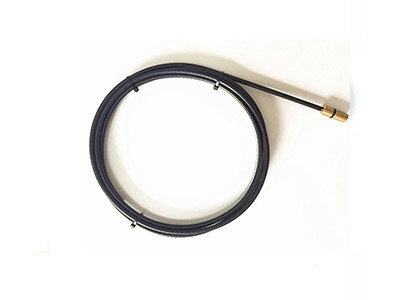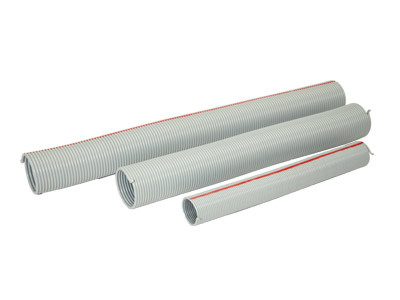Choosing the Best Compression Spring: A Guide for Manufacturers
Release Time:
2025-04-26
When it comes to manufacturing, the choice of the best compression spring can significantly impact the performance and longevity of your products. Compression springs are designed to resist compressive forces and are commonly used in various applications, from automotive to industrial machinery. To ensure you make the right selection, consider the following critical factors: 1. **Material Selectio

When it comes to manufacturing, the choice of the best compression spring can significantly impact the performance and longevity of your products. Compression springs are designed to resist compressive forces and are commonly used in various applications, from automotive to industrial machinery. To ensure you make the right selection, consider the following critical factors:
1. **Material Selection**: The material of a compression spring is crucial for its performance. Common materials include stainless steel, carbon steel, and alloys. Stainless steel offers excellent corrosion resistance, making it ideal for applications exposed to moisture or chemicals. On the other hand, carbon steel may provide better tensile strength at a lower cost. When choosing the best compression spring, assess the environmental conditions it will face and select a material that meets those requirements.
2. **Spring Design**: The design of the spring greatly influences its functionality. Key design elements include the wire diameter, the number of active coils, and the spring's overall dimensions. A thicker wire may increase strength but also raises the spring's weight. Conversely, more active coils can enhance flexibility but may reduce load-bearing capacity. It's essential to balance these aspects based on your specific application needs.
3. **Load and Deflection**: Understanding the load requirements and deflection characteristics of your spring is vital. The best compression spring should be able to handle the maximum load without permanent deformation. Calculate the spring constant (k) to determine how much a spring will compress under a given load, ensuring it meets your operational demands. Consult the spring’s load-deflection curve to understand how it behaves under different forces.
4. **Manufacturing Tolerances**: Precision is key in manufacturing. Ensure that the compression spring is produced within tight tolerances to guarantee consistent performance. Tighter tolerances often result in higher costs, but they are necessary for applications requiring high reliability and precision.
5. **Testing and Quality Assurance**: Before finalizing your choice, it is crucial to conduct thorough testing. This includes fatigue testing and load testing to ensure the spring can withstand its intended use. Quality assurance processes can prevent costly failures in the long run.
In conclusion, selecting the best compression spring involves careful consideration of material, design, load requirements, tolerances, and testing. By focusing on these aspects, manufacturers can enhance the durability and performance of their products, ultimately leading to greater customer satisfaction. Whether you are designing a new product or replacing an existing component, understanding these principles will help you make informed decisions in your manufacturing processes.
1. **Material Selection**: The material of a compression spring is crucial for its performance. Common materials include stainless steel, carbon steel, and alloys. Stainless steel offers excellent corrosion resistance, making it ideal for applications exposed to moisture or chemicals. On the other hand, carbon steel may provide better tensile strength at a lower cost. When choosing the best compression spring, assess the environmental conditions it will face and select a material that meets those requirements.
2. **Spring Design**: The design of the spring greatly influences its functionality. Key design elements include the wire diameter, the number of active coils, and the spring's overall dimensions. A thicker wire may increase strength but also raises the spring's weight. Conversely, more active coils can enhance flexibility but may reduce load-bearing capacity. It's essential to balance these aspects based on your specific application needs.
3. **Load and Deflection**: Understanding the load requirements and deflection characteristics of your spring is vital. The best compression spring should be able to handle the maximum load without permanent deformation. Calculate the spring constant (k) to determine how much a spring will compress under a given load, ensuring it meets your operational demands. Consult the spring’s load-deflection curve to understand how it behaves under different forces.
4. **Manufacturing Tolerances**: Precision is key in manufacturing. Ensure that the compression spring is produced within tight tolerances to guarantee consistent performance. Tighter tolerances often result in higher costs, but they are necessary for applications requiring high reliability and precision.
5. **Testing and Quality Assurance**: Before finalizing your choice, it is crucial to conduct thorough testing. This includes fatigue testing and load testing to ensure the spring can withstand its intended use. Quality assurance processes can prevent costly failures in the long run.
In conclusion, selecting the best compression spring involves careful consideration of material, design, load requirements, tolerances, and testing. By focusing on these aspects, manufacturers can enhance the durability and performance of their products, ultimately leading to greater customer satisfaction. Whether you are designing a new product or replacing an existing component, understanding these principles will help you make informed decisions in your manufacturing processes.
Related News







